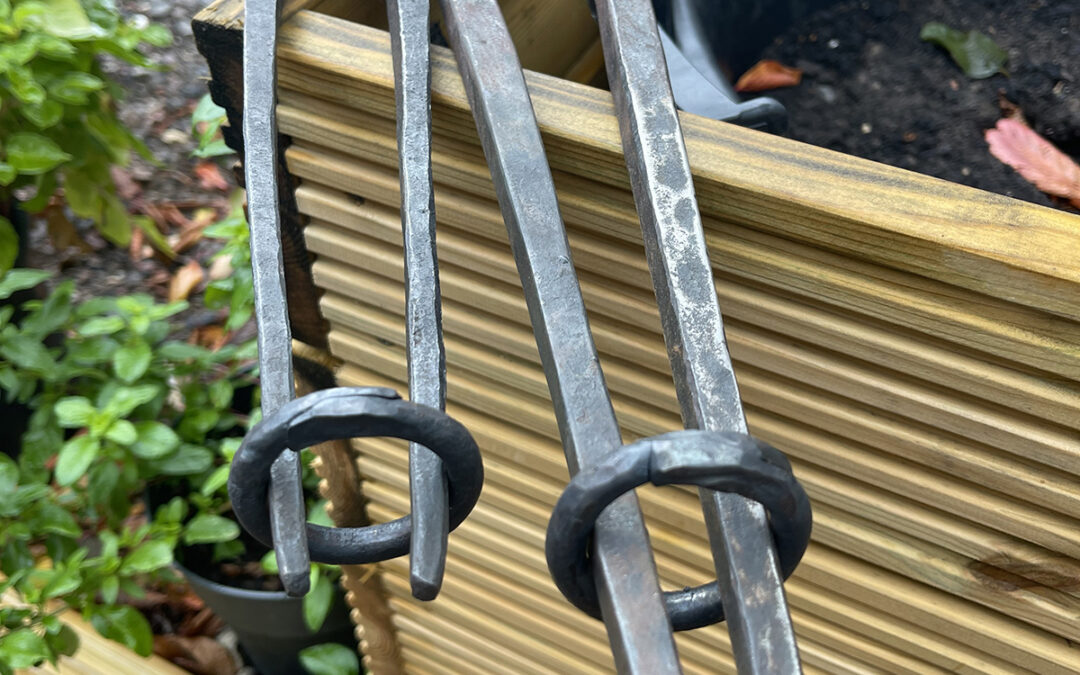The two rings pictured I made for holding the reigns (handles) of the tongs, they can move up and down the reigns for adjustability, this requires less effort to grip while working the hot metal.
Once the bar is bent into a full circle with the ends overlapped, it is forge welded to create continuous piece.
What is Forge Welding?
Forge welding is an ancient technique that has been used by blacksmiths and metalworkers for centuries. It involves heating two pieces of metal until they are hot enough to be joined together with hammering, pressure, or some other form of force.
The basic process of forge welding is as follows:
1 The two pieces of metal are heated to a high temperature, typically between 1,100 and 2,000 degrees Fahrenheit.
2 The heated pieces of metal are then brought together and hammered or pressed together until they form a solid bond.
3 The welded joint is then annealed, or cooled slowly, to relieve any stresses in the metal.
Forge welding can be used to join a wide variety of metals, including steel, iron, copper, and brass. It is a particularly strong and durable form of welding, and it can be used to create joints that are virtually invisible.
There are several reasons why forge welding is a popular technique for joining metals. First, it is a very strong and durable form of welding. The joint created by forge welding is typically stronger than the parent metal, and it is very resistant to fatigue and corrosion.
Second, forge welding is a relatively simple technique to learn. With a little practice, most people can learn to forge weld basic joints.
Third, forge welding can be used to join a wide variety of metals. This makes it a versatile technique that can be used for a variety of projects.

